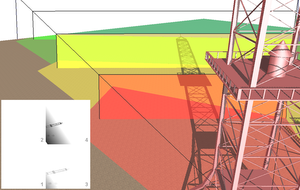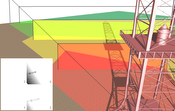Information
- Publication Type: Other Reviewed Publication
- Workgroup(s)/Project(s):
- Date: 2010
- Booktitle: EUROGRAPHICS 2010 State of the Art Reports
- Location: Norrköping, Sweden
Abstract
Due to its versatility, speed and robustness, shadow mapping has always been a popular algorithm for fast hard shadow generation since its introduction in 1978, first for off-line film productions and later increasingly so in real-time graphics.So it is not surprising that recent years have seen an explosion in the number of shadow map related publications. The last survey that encompassed shadow mapping approaches, but was mainly focused on soft shadow generation, dates back to 2003~cite{HLHS03} and the last survey for general shadow generation dates back to 1990~cite{Woo:1990:SSA}. No survey that describes all the advances made in hard shadow map generation in recent years exists.
On the other hand, shadow mapping is widely used in the game industry, in production, and in many other applications, and it is the basis of many soft shadow algorithms. Due to the abundance of articles on the topic, it has become very hard for practioners and researchers to select a suitable shadow algorithm, and therefore many applications miss out on the latest high-quality shadow generation approaches.
%Real-time research was always tempted to bring global lighting techniques into the real-time domain. One of the most popular adaptations in this respect are hard shadows. It is therefore not surprising that real-time hard shadow generation has been one of the most active areas in research in recent years. But what is surprising is that the last state-of-the-art report that encompassed this field dates back to 1990~cite{Woo:1990:SSA}, were only the beginnings of this field were explored.
The goal of this survey is to rectify this situation by providing a detailed overview of this field. We provide a detailed analysis of shadow mapping errors and derive from this a comprehensive classification of the existing methods. We discuss the most influential algorithms, consider their benefits and shortcomings and thereby provide the reader with the means to choose the shadow algorithm best suited to her needs.
Additional Files and Images
Weblinks
No further information available.BibTeX
@inproceedings{scherzer_2010a,
title = "A Survey of Real-Time Hard Shadow Mapping Methods",
author = "Daniel Scherzer and Michael Wimmer and Werner Purgathofer",
year = "2010",
abstract = "Due to its versatility, speed and robustness, shadow mapping
has always been a popular algorithm for fast hard shadow
generation since its introduction in 1978, first for
off-line film productions and later increasingly so in
real-time graphics. So it is not surprising that recent
years have seen an explosion in the number of shadow map
related publications. The last survey that encompassed
shadow mapping approaches, but was mainly focused on soft
shadow generation, dates back to 2003~cite{HLHS03} and the
last survey for general shadow generation dates back to
1990~cite{Woo:1990:SSA}. No survey that describes all the
advances made in hard shadow map generation in recent years
exists. On the other hand, shadow mapping is widely used in
the game industry, in production, and in many other
applications, and it is the basis of many soft shadow
algorithms. Due to the abundance of articles on the topic,
it has become very hard for practioners and researchers to
select a suitable shadow algorithm, and therefore many
applications miss out on the latest high-quality shadow
generation approaches. %Real-time research was always
tempted to bring global lighting techniques into the
real-time domain. One of the most popular adaptations in
this respect are hard shadows. It is therefore not
surprising that real-time hard shadow generation has been
one of the most active areas in research in recent years.
But what is surprising is that the last state-of-the-art
report that encompassed this field dates back to
1990~cite{Woo:1990:SSA}, were only the beginnings of this
field were explored. The goal of this survey is to rectify
this situation by providing a detailed overview of this
field. We provide a detailed analysis of shadow mapping
errors and derive from this a comprehensive classification
of the existing methods. We discuss the most influential
algorithms, consider their benefits and shortcomings and
thereby provide the reader with the means to choose the
shadow algorithm best suited to her needs.",
booktitle = "EUROGRAPHICS 2010 State of the Art Reports",
location = "Norrk\"{o}ping, Sweden",
URL = "https://www.cg.tuwien.ac.at/research/publications/2010/scherzer_2010a/",
}


 pdf
pdf
